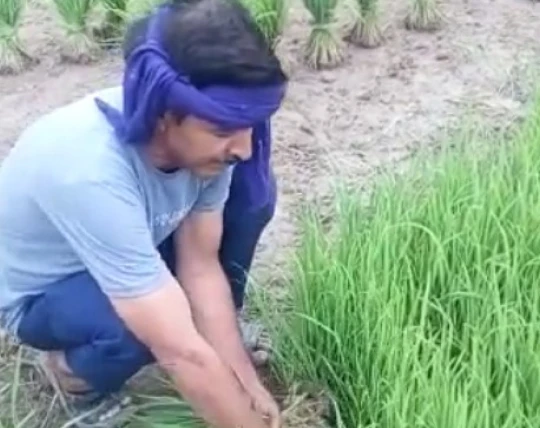Ganjam farmers cultivate a wide variety of organic and sustainably grown crops, such as traditional non-basmati, cashew-nut, moong and groundnuts and more, which are then fine-graded and quality-tested before being distributed.


NBF’s Project Ganjam is situated in the Angargaon District of Ganjam. With its strategic location, the project is conveniently accessible, located 120 kilometers away from Angargaon’s Bhubaneswar airport and 80 kilometers from Khurda Railway station. This proximity to transportation hubs makes it a feasible and well-connected location for the project’s operations.
Project Ganjam aims to foster sustainable agriculture practices and promote organic farming in the region. The initiative involves working closely with local farmers to implement organic farming techniques, provide training and support, and create a sustainable supply chain for organic produce. By establishing this project in Ganjam, Nature Bio Foods is not only contributing to the local economy but also promoting environmental conservation and healthier farming practices.
NBF’s Project Ganjam


Location of the Project
NBF’s Ganjam project is located in the eastern Indian state of Odisha. Ganjam Project in Odisha city lies at uneven ridges of low heights at the Barbara hills. Situated on the Bay of Bengal coast, Ganjam boasts a scenic and picturesque location with its beautiful beaches and serene landscapes. The district is known for its rich cultural heritage, historical significance, and diverse natural beauty. It is approximately 1714 km (1065. mile) from the national capital, New Delhi. The strategic location of the project ensures efficient logistical operations and enables the company to reach a wider market, thereby benefiting both the farmers and consumers.
Coordinates – Ganjam project is located at 19.74035 N and 85.05615 E with an average elevation of 178m.

Social Certification

Fairtrade Certified Ganjam Project

NBF’s Project Ganjam is committed to upholding the principles of fairness and empowerment, aligning itself with the esteemed approach of Fairtrade. With a profound dedication to making trade equitable for all stakeholders, NBF holistically supports and adheres to Fairtrade’s stringent standards. Our unwavering commitment is reflected in the fact that our products proudly bear the FAIRTRADE Mark, symbolizing our compliance with internationally recognized and independently verified benchmarks.
At NBF, we firmly believe in giving farmers and workers a strong voice and empowering them at every level of the trade process. By adhering to Fairtrade’s principles, we ensure that they have the autonomy to make decisions about their farms and investments, as well as an equal say in our discussion forums and suggestions, as an inherent standard operating procedure of Fairtrade.
Our steadfast adherence to Fairtrade practices revolutionizes the way trade works by promoting better prices, ensuring decent working conditions, and fostering a fairer deal for farmers and workers worldwide. By promoting these ideals, NBF’s Project Ganjam not only prioritizes the quality and sustainability of our organic products but also uplifts the lives of the individuals who contribute to this organic movement.
Biosuisse Organic Certified Ganjam Project

Nature Bio Foods’ Ganjam project has played a pivotal role in fostering sustainable agriculture and uplifting local communities in the Ganjam region. Through the establishment of organic farming infrastructure, such as composting units and vermicomposting pits, farmers have witnessed significant improvements in soil health and fertility. An exemplary achievement for the project is the prestigious Bio Suisse certification, an internationally recognized accolade bestowed upon products that meet stringent organic farming standards. This certification serves as a testament to the unwavering dedication of the Ganjam project towards sustainable agriculture and the implementation of organic farming practices.
By actively promoting organic farming methods, the project has not only contributed to the creation of a more environmentally sustainable future for the region and its inhabitants but has also offered global consumers access to superior-quality organic products. Nature Bio Foods’ Ganjam project stands as a model example of the positive impact that can be achieved through the combination of sustainable practices, community support, and adherence to globally recognized organic farming standards. It continues to pave the way for a more ecologically conscious and socially responsible agricultural sector.

Everything you need to know about Ganjam
Ganjam is a district in the Indian state of Odisha. It is located on the coast of the Bay of Bengal, and is bounded by the districts of Gajapati to the north, Koraput to the northeast, Rayagada to the east, Puri to the south, and Andhra Pradesh to the west. The district has a population of over 3.5 million people, and is the most populous district in Odisha.
The district is known for its rich history and culture. It was once the capital of the Kalinga kingdom, and was a major center of trade and commerce. The district is home to many historical monuments, including the Jagannath Temple in Puri, the Dhauligiri hills, and the Konark Sun Temple.
The district is also home to a number of natural attractions, including the Gopalpur Beach, the Chilika Lake, and the Mahendragiri hills. The district is a major producer of rice, jute, and coconuts. It is also home to a number of industries, including the iron and steel industry, the cement industry, and the textile industry.
Ganjam is a popular tourist destination, and is known for its beautiful beaches, its historical monuments, and its natural beauty. The district is also home to a number of festivals, including the Rath Yatra, the Puri Beach Festival, and the Chilika Lake Festival. Ganjam is a beautiful and vibrant district with a lot to offer visitors. If you are looking for a place to relax, explore, and learn about Indian culture, Ganjam is the perfect destination for you.
Agricultural Characteristics
Soil Profile

The soil profile of NBF’s Project Ganjam in Odisha exhibits distinct characteristics that are conducive to sustainable agriculture and organic farming practices. The region predominantly features fertile soils, rich in organic matter and essential nutrients, providing an ideal foundation for cultivating a variety of crops.

Alluvial Soil: Alluvial soil is prevalent along the river banks and floodplains in Ganjam. It is formed by the deposition of sediments carried by rivers, making it fertile and rich in nutrients. Alluvial soil is well-drained and suitable for a wide range of crops.

Red and Yellow Soil: Red soil, also known as laterite soil, is widespread in the upland areas of Ganjam. It derives its red color from the presence of iron oxide. Red soil is generally well-drained but tends to be relatively low in fertility and organic matter. However, with proper soil management practices and nutrient supplementation, it can support the cultivation of various crops.

Mountain Soil: Sandy soil is found in certain pockets of Ganjam. It has a coarse texture and excellent drainage properties, allowing water to pass through quickly. Sandy soil tends to be low in fertility and water-holding capacity but can be suitable for crops that thrive in well-drained conditions.

Clay Soil: Clay soil is present in some areas of Ganjam. It has a fine texture and high water-holding capacity, making it prone to waterlogging if not properly managed. Clay soil can be fertile, but it requires good soil structure management to prevent compaction and improve drainage.
Climate Condition
The climate conditions of NBF’s Project Ganjam in Odisha are influenced by its location in the eastern coastal region of India. The project area experiences a tropical climate characterized by distinct seasons and moderate to high levels of humidity throughout the year. Overall, the climate of NBF’s Project Ganjam offers a suitable environment for agricultural activities. The presence of the monsoon season provides essential water resources for crop cultivation, while the mild winters allow for the growth of crops that require cooler temperatures. The project area’s climatic conditions are taken into consideration when planning and implementing agricultural practices, ensuring optimal crop selection and timing for maximum productivity.
The climate conditions of NBF’s Project Ganjam in Odisha provide an ideal environment for agricultural activities, including the cultivation of superior aromatic non-Basmati rice. Scientific studies have revealed that specific climatic parameters greatly influence the aroma and quality of Basmati rice. In Ganjam, the day temperatures ranging from 25 to 32°C, coupled with overnight temperatures between 20 to 25°C, contribute to the development of the characteristic strong aroma in Basmati varieties. Additionally, the humidity levels of 70-80% during the grain-filling and primordial phases further enhance the aromatic qualities of the rice. The climatic conditions in the Odisha region have been scientifically proven to be highly suitable for producing superior aromatic non-Basmati rice, making it an ideal location for NBF’s organic project in Ganjam.
Temp.
Minimum

16 °C
(Dec-Jan)
Maximum

37 °C
(May-June)
Humidity
Relative Humidity

70-80%
Rainfall
Average Rainfall

1204.8 mm
Seasons
There are mainly three seasons.

Summer
(Mar-June)

Rainy
(July-Sep)

Winter
(Oct-Feb)
Farm Water Availability
Water availability is a crucial aspect for the success of NBF’s Project Ganjam in Odisha. In Ganjam, the project benefits from a moderate to high availability of water resources, primarily due to its proximity to the coast and the presence of rivers and other water bodies. Here are some key factors related to farm water availability:
1. Monsoon Rainfall: Ganjam receives significant rainfall during the monsoon season, which contributes to the water supply for agricultural activities. The heavy monsoon precipitation helps replenish water sources such as rivers, reservoirs, and groundwater.
2. Surface Water Sources: The region is endowed with several rivers and water reservoirs that serve as important surface water sources for irrigation purposes. These water bodies provide a reliable water supply during the dry season when rainfall is limited.
3. Irrigation Infrastructure: NBF’s Project Ganjam utilizes irrigation infrastructure such as canals, water channels, and wells to ensure the efficient distribution of water to the farmlands. Proper water management techniques, including drip irrigation and sprinkler systems, may also be employed to optimize water usage and minimize wastage.
4. Groundwater Resources: The availability of groundwater is another significant aspect of farm water availability in Ganjam. Farmers may rely on wells and tube wells to extract groundwater for irrigation, especially during periods of low rainfall or when surface water sources are insufficient.
Nature of Farmers
The farmers in Ganjam possess diverse characteristics and play a crucial role in the agricultural landscape of the region. Here are some notable aspects regarding the nature of farmers in Ganjam:
1. Agriculture as a Livelihood: Farming is the primary occupation for a significant number of farmers in Ganjam. They rely on agriculture as a means of livelihood, cultivating crops and raising livestock to sustain themselves and their families.
2. Small and Marginal Farmers: Ganjam has a substantial number of small and marginal farmers who own relatively small plots of land. These farmers often practice subsistence farming, growing crops primarily for their own consumption with limited surplus for sale.
3. Traditional Farming Practices: Many farmers in Ganjam follow traditional farming practices that have been passed down through generations. They often have deep-rooted knowledge of local crops, agricultural techniques, and seasonal cycles, which they utilize in their farming activities.
4. Dependence on Monsoon: The farmers in Ganjam heavily rely on monsoon rainfall for their agricultural activities. The timing and adequacy of the monsoon directly impact crop cultivation and yields. Farmers plan their agricultural activities based on the onset and duration of the monsoon season.
5. Community Bond: Agriculture in Ganjam often fosters a sense of community among farmers. They come together for collective activities like sowing, harvesting, and post-harvest processes. The exchange of knowledge, sharing of resources, and mutual support are prevalent among the farming communities.

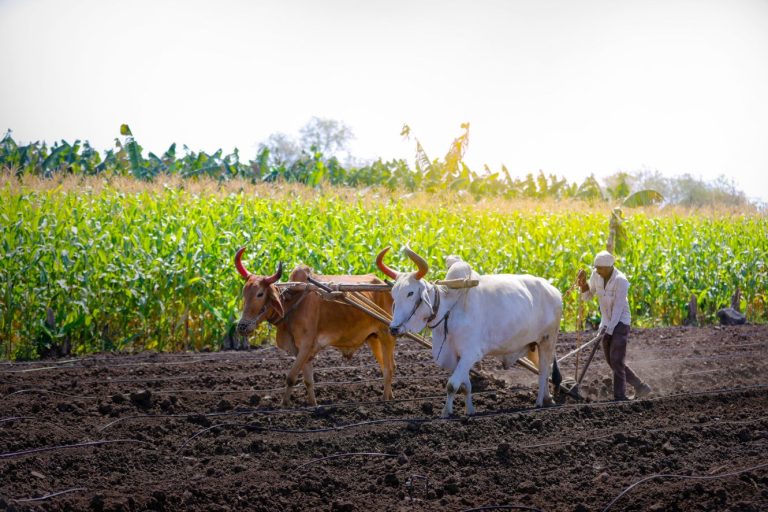

Growing Conditions
Ganjam benefits from favorable growing conditions that support a variety of crops. The region’s agricultural success can be attributed to several factors, including its fertile soil, suitable climate, and access to water resources.
Ganjam boasts a diverse soil profile that includes fertile alluvial soil, sandy soil, and red soil. These soil types offer different advantages for crop cultivation, ranging from good drainage in sandy soil to high nutrient content in alluvial and red soils. Farmers in Ganjam leverage the unique characteristics of each soil type to select suitable crops and maximize yields.
The region experiences a tropical monsoon climate, with distinct wet and dry seasons. The monsoon brings significant rainfall to Ganjam, ensuring adequate moisture for crop growth. The temperature ranges from warm to hot throughout the year, providing favorable conditions for various crops, including rice, millets, pulses, oilseeds, and fruits.
The growing conditions in Ganjam are conducive to a diverse range of crops, enabling farmers to sustain their livelihoods and contribute to the agricultural prosperity of the region. The combination of fertile soil, favorable climate, and access to water resources makes Ganjam an ideal location for agricultural activities and promotes a thriving agricultural sector.
Crop Details
Kharif
-
- Traditional Non Basmati
- Cashewnut
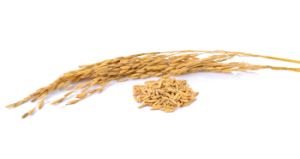
Rabi
- Moong
- Groundnut
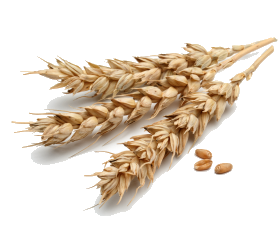
Statistics
NBF Supply Chain

NBF Supply Chain
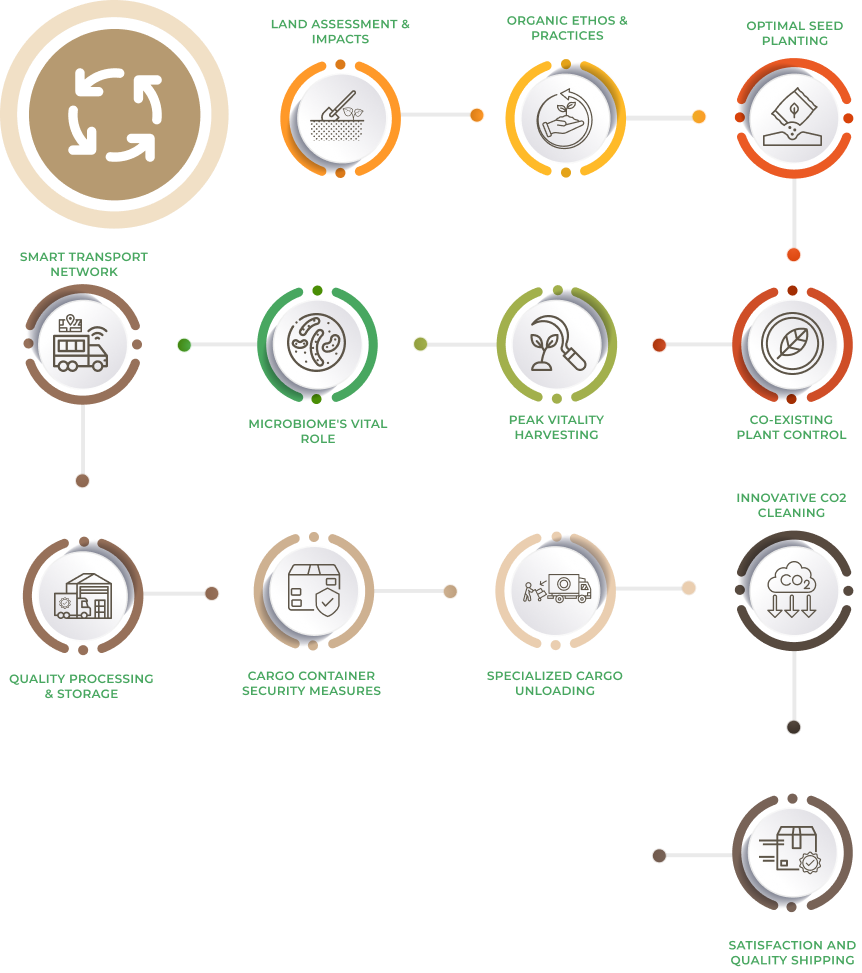
How to Reach Ganjam, Odisha?
Ganjam district in Odisha can be reached through various modes of transportation. It is advisable to check the availability of transportation options and plan your journey in advance. Additionally, it is recommended to consider the prevailing weather and road conditions, especially during monsoon season, to ensure a safe and comfortable travel experience to Ganjam, Odisha. Here are the common ways to reach Ganjam:

By Train
Ganjam has its own railway station called Ganjam Railway Station, which is well-connected to major cities and towns in India. You can check the train schedules and book tickets to Ganjam from your place of origin. Khurda Road Junction, located about 80 kilometers away, is another major railway station that connects to Ganjam. From there, you can take a taxi or bus to reach your destination in Ganjam.

By Road
Ganjam is well-connected by roadways, and you can reach the district by bus or private vehicle. The National Highway 16 (previously known as NH-5) passes through Ganjam, providing convenient access to the district. Regular bus services operate from nearby cities and towns to Ganjam. You can also hire a taxi or drive your own vehicle to reach Ganjam, depending on your preference and convenience.

By Air
The nearest airport to Ganjam is Biju Patnaik International Airport in Bhubaneswar, which is approximately 120 kilometers away. From the airport, you can hire a taxi or take a bus to reach Ganjam. The journey takes around 3-4 hours, depending on the traffic and road conditions.

Places to Visit in Ganjam, Odisha


Elevation
It has an average elevation of roughly 144 meters.


River
One major river found in Ganjam district is the Rushikulya River.


Soil
Four types of soils are mainly observed in the district – Alluvial Soil, Red Soil, Sandy Soil and Clay Soil.
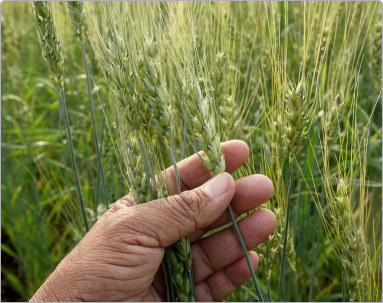

Crop
Traditional Non Basmati, Cashewnut, Moong and Groundnuts.
Sustainability Efforts
Economic
| Women's Empowerment through Entrepreneurial Training Programs |
453 |
|
| Empowering Young Women: Career Counseling for Future Success |
222 |
|
| Craftsmanship Unleashed: Skill Development in Artisanal Handicrafts |
234 |
|
Social
| Nourishing the Future: Workshop on Child Nutrition and Well-being |
243 |
|
| Guiding the Leaders of Tomorrow: Mentoring Programs for Students |
344 |
|
Environmental
| Cultivating the Earth: Advanced Training in Soil Regeneration |
345 |
|
| Towards a Plastic-Free Future: Comprehensive Reduce and Reuse Initiatives |
345 |
|
| Preserving Our Lifeline: Campaigns for Water Conservation and Stewardship |
324 |
|
| Agriculture in Harmony with Nature: Organic Farming workshops |
334 |
|
| Clean Village, Healthy Village: Promoting Cleanliness and Sanitation at the Grassroots Level |
126 |
|
Impact

Impact of our Farmers
The impact of our farmers is significant in enhancing soil fertility through various methods such as crop rotation, cover cropping, reduced tillage, and application of compost. These practices reduce fuel-intensive tillage, resulting in carbon sequestration, decreasing greenhouse gases, and reversing climate change. In addition, they can improve soil structure and reduce the possibility of soil erosion.

Difference our People are Making
The difference our organization is making is by converting land from conventional management to organic management, managing the entire surrounding system for biodiversity and sustainability, and using alternative sources of nutrients such as crop rotation, residue management, and organic manures. We provide complete biological inputs to our crops, and our teams supervise and manage weed and pest control through better management practices, physical and cultural means.

Contribution by our Customers
Our customers’ contribution is vital in promoting food safety and environmental issues. The concern for their health, the environment, and worldwide crises has increased exponentially. Organic agriculture has become the only option for many consumers. Simply by consuming organic produce, they are contributing to the overall health of the planet and making an impact towards sustainability.










